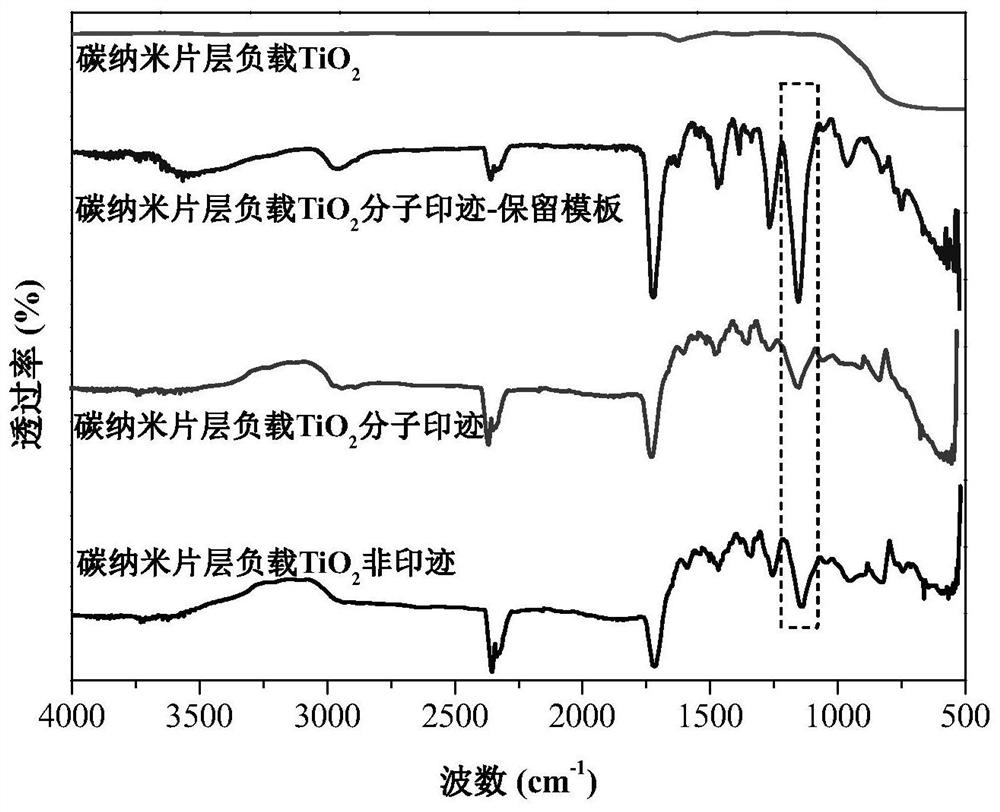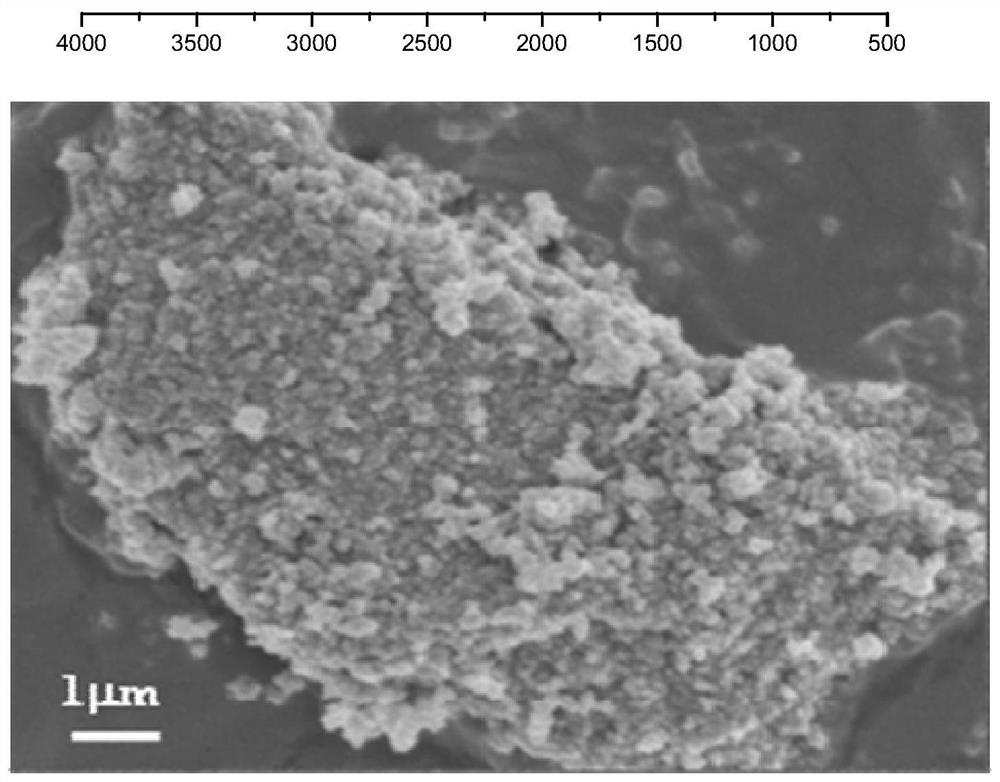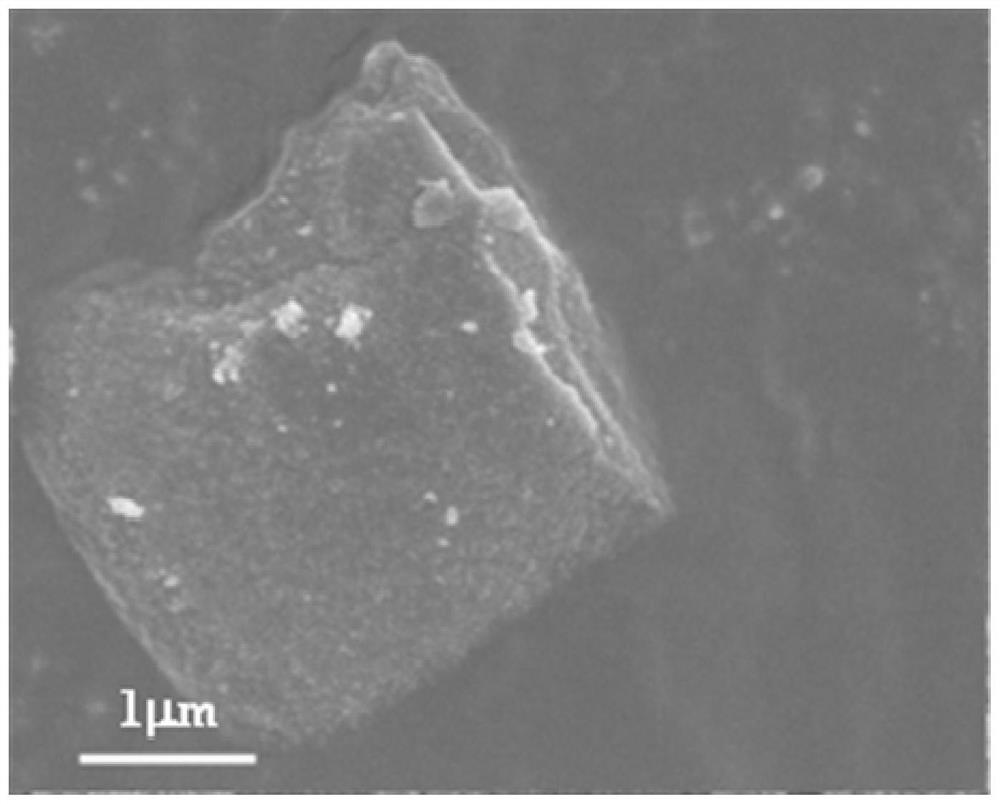A carbon nanosheet loaded tio 2 Molecularly imprinted material and its preparation method and application
A technology of carbon nanosheets and molecular imprinting, which is applied in chemical instruments and methods, ion exchange, and other chemical processes, can solve the problem of low degradation effect of low-concentration pollutants in products, and does not involve strong coupling of selectivity-adsorption-photocatalysis and other problems, to achieve the effect of obvious adsorption-photocatalysis synergy, easy large-scale production, and simple process
- Summary
- Abstract
- Description
- Claims
- Application Information
AI Technical Summary
Problems solved by technology
Method used
Image
Examples
Embodiment 1
[0057] A carbon nanosheet supported TiO 2 A method for preparing a molecularly imprinted material, comprising the following steps:
[0058] (1) Dissolve F127 in water and absolute ethanol with a volume ratio of 1:1 at room temperature and constant stirring, and control its mass concentration to 0.06%. After the reagent is completely dissolved, add resorcinol in sequence , concentrated hydrochloric acid and formaldehyde solution, the control resorcinol and formaldehyde molar ratio is 1:2, the pH of solution is 1.5, obtains solution A; The mass ratio of F127 and hydroquinone is 1:1;
[0059] (2) Under the condition of room temperature and continuous stirring, put the titanium trichloride solution (containing 3wt% hydrochloric acid) with a concentration of 0.5mol / L in water, control its volume ratio to 1:1, stir for a period of time and then Add sodium nitrate and sodium sulfate, and control the volume ratios of their mass and titanium trichloride aqueous solution to 1:80g / mL an...
Embodiment 2
[0069] As described in Example 1, the difference is:
[0070] In step (6), the substance ratio of control template: functional monomer: crosslinking agent is 1:2:5. On this basis, the mass ratio of the matrix to the imprinted polymer (functional monomer + crosslinking agent) is controlled to be 1:2;
[0071]In step (7), the polymerization reaction was carried out in a water bath at 50° C. for 30 hours. Cool to room temperature, centrifuge, wash three times with ethanol and distilled water respectively, then add 300mL distilled water, place under 600W ultraviolet light for 1 hour to remove the template.
Embodiment 3
[0073] As described in Example 1, the difference is:
[0074] In step (6), the substance ratio of control template: functional monomer: crosslinking agent is 1:6:15. On this basis, the mass ratio of the matrix to the imprinted polymer (functional monomer + crosslinking agent) is controlled to be 1:8;
[0075] In step (7), the polymerization reaction was carried out in a water bath at 90° C. for 15 hours. Cool to room temperature, centrifuge, wash three times with ethanol and distilled water respectively, then add 300mL distilled water, place under 200W ultraviolet light for 5 hours to remove the template.
PUM
 Login to View More
Login to View More Abstract
Description
Claims
Application Information
 Login to View More
Login to View More - R&D
- Intellectual Property
- Life Sciences
- Materials
- Tech Scout
- Unparalleled Data Quality
- Higher Quality Content
- 60% Fewer Hallucinations
Browse by: Latest US Patents, China's latest patents, Technical Efficacy Thesaurus, Application Domain, Technology Topic, Popular Technical Reports.
© 2025 PatSnap. All rights reserved.Legal|Privacy policy|Modern Slavery Act Transparency Statement|Sitemap|About US| Contact US: help@patsnap.com



